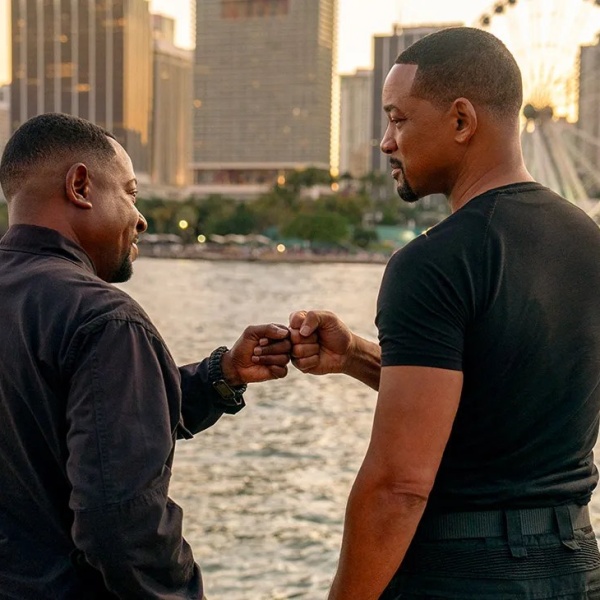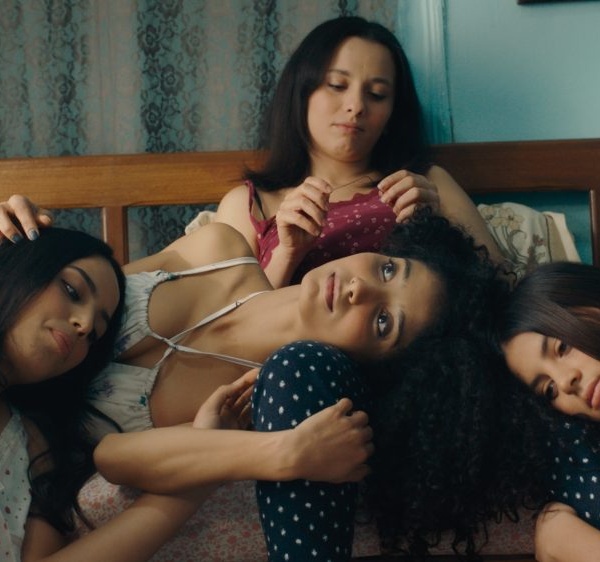
One of the most exciting talents to emerge out of the U.K. in the last decade or so is Andrea Arnold. The former television presenter won an Oscar for her short film “Wasp” in 2005, and made her feature debut the following year with the powerful, gritty thriller “Red Road.” 2009 saw her follow it up with another kitchen-sink type film, showcasing some incredible perfrmances, namely the drama “Fish Tank,” which gathered even more acclaim, and allowed the director to make inroads internationally. Her choice of a third film raised some eyebrows, however: Arnold was selected to helm a long-in-the-works film version of Emily Brontë‘s “Wuthering Heights.”
The film had been in development for years: Natalie Portman was originally attached to a version helmed by John Maybury (“Love is the Devil“), before Abbie Cornish stepped in, with Michael Fassbender set to play the key role of Heathcliff, while another about-turn in 2009 saw Peter Webber (“The Girl With The Pearl Earring“) in the director’s chair, with Gemma Arterton and Ed Westwick in the two lead roles (we can’t be the only people to be glad that didn’t come to pass…). But Arnold eschewed the starry route when she took the job, casting mostly unknown teens and twentysomethings in the key roles. Was this some craven attempt to appeal to “Twilight” fans (the book being a favorite of characters within the vampire franchise)? More importantly, would Arnold taking on such well-known literary material lead to her abandoning what made her earlier work so special, and turning out yet another airless costume drama? Happily, not in the least, in either case. While Brontë purists might take issue with some of Arnold’s creative decisions, they also manage to make it a radical, but entirely successful, version, one that might be her most uncompromising film yet. It might be a period piece, but that doesn’t mean Arnold is pulling her punches.
.jpg)
If you’re somehow unfamiliar with the oft-adapted tale (which, like in most filmed versions including the best-known 1939 take, is only half-told here), it begins with Heathcliff (Solomon Glave as a young man, James Howson when older), a homeless boy, being adopted by the kindly Mr. Earnshaw (Paul Hilton), in an attempt to be “a good Christian.” Heathcliff comes to the Earnshaw farm, Wuthering Heights, where he swiftly falls in love with Earnshaw’s daughter Cathy (Shannon Beer younger, Kaya Scodelario older), while never being accepted by her brother Hindley (Lee Shaw). When Mr. Earnshaw dies, the newly-married Hindley inherits the farm, consigning Heathcliff to live with the animals, and making any real romance between him and Cathy an impossibility, particularly once she befriends wealthy neighbor Edgar Linton (Jonathan Powell/James Northcote).
The thing is, the changes to the established order aren’t really changes at all, but instead are steps towards Brontë’s original intention. The youthful casting (and splitting of the roles) helps to bring to life a world where, thanks to disease, exposure and unsafe childbirth, few live past forty, and the actors are closer to the ages intended by the author than any previous version. The other shake-up is a bigger leap, but it works beautifully. Heathcliff is described as dark and gypsy-like in the novel, but whereas recent inhabitants of the part have included Ralph Fiennes and Tom Hardy, Arnold has cast black actors in the role.
In the 2011 version, the character begins unable to speak any English, and is marked by whip-marks and brandings on his back, clearly a former slave of some kind, and it goes an enormous way to emphasizing his outsider role in the Yorkshire community, adding extra charge to his cruel treatment (witness Edgar saying that he’s dressed “like a little circus monkey”) without ever betraying the source material. It all adds up to the most sympathetic Heathcliff that we can recall on screen, something crucial in terms of the sometimes abominable acts he commits before the credits roll. .jpg)
As much as it’s Heathcliff’s story (and here, it really is, as he stays front and center throughout), Arnold makes the Yorkshire landscape just as much a central character. It’s a far cry from the dingy streets and council flats of her previous films, but the director is almost Terrence Malick-like in her dedication to nature and landscape here. Like “Fish Tank,” she’s shot it in Academy Ratio, and it works even better here, giving her the height to capture the rolling hills and misty moors in which the story takes place.
No detail escapes Robbie Ryan‘s camera (career-best work from someone who is already one of our favorite active cinematographers), from sunlight catching the dust kicked up by violence to a tear-like droplet of blood off a hanging pheasant (those who can’t stand to watch violence towards animals may be forced to look elsewhere in several places). And night is really night here, with nocturnal scenes only faintly visible, untainted by light pollution of any kind. But unlike Malick’s most recent film, there’s grace in nature, but there’s also brutality; the moors are a place as savage as some of the characters.
Not that it’s a stately change of pace for Arnold. Her style is immediately recognizable, a nimble hand-held camera capturing the emotional and physical violence as well as their surroundings. The editing (from regular cutter Nicolas Chaudeurge) is impeccable as well, the second half of the film is haunted by images of Heathcliff and Cathy in happier times, while there’s a marvelous economy of storytelling in the passage of time — Heathcliff marches out onto the moor a boy, and returns from the mist as a man. .jpg)
Arnold confirms what we suspected from Katie Jarvis‘ performance in “Fish Tank”; that she’s a phenomenal director of untried talent. Arguably the film’s best two performances come from Solomon Glave and Shannon Beer, as the younger Heathcliff and Cathy, effortlessly selling a relationship that has to walk a difficult line between sibling affection and soul-destroying love. Kaya Scodelario, perhaps the best-known face in the cast after starring in four seasons of British TV hit “Skins” (as well as cropping up in “Moon,” among others), is a heart-wrenching revelation as Older Cathy, while Nichola Burley (“Donkey Punch“), as the older Isabella Morley, breaks hearts as well, as the naive girl caught up in Heathcliff’s vengeance.
Nelly, the housekeeper, is naturally a reduced presence, seeing as Arnold eschews the framing device of the novel, but it’s still a lovely turn from another debutante, Simone Jackson. Some have been cooler on James Howson as the elder Heathcliff, but perhaps it’s only because it’s such a different version of the character than the Byronic anti-hero of popular imagination: we thought it was a strong debut turn, even if he is outshone by his younger counterpart.
It’s not quite a tearjerker, Arnold playing up the anger of the novel, and we sort of feel that’s the way that it should be. It is, however, incredibly powerful, extremely sexy (there’s one scene that takes place between Cathy and Heathcliff after the latter has been caned that’s more erotic than anything we’ve seen in a while), and a truly remarkable reinvention of a text that beforehand, we weren’t sure we ever needed to see on screen again. Arnold might misstep a little at the last with the use of a new song, “The Enemy,” by Mumford & Sons, but for 99% of the running time the 2011 version of “Wuthering Heights” is a model of how to bring a classic novel kicking and screaming into the twenty-first century. [A]





